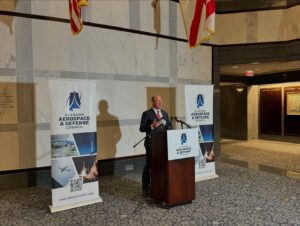2020 Democratic primary field puts diversity in spotlight
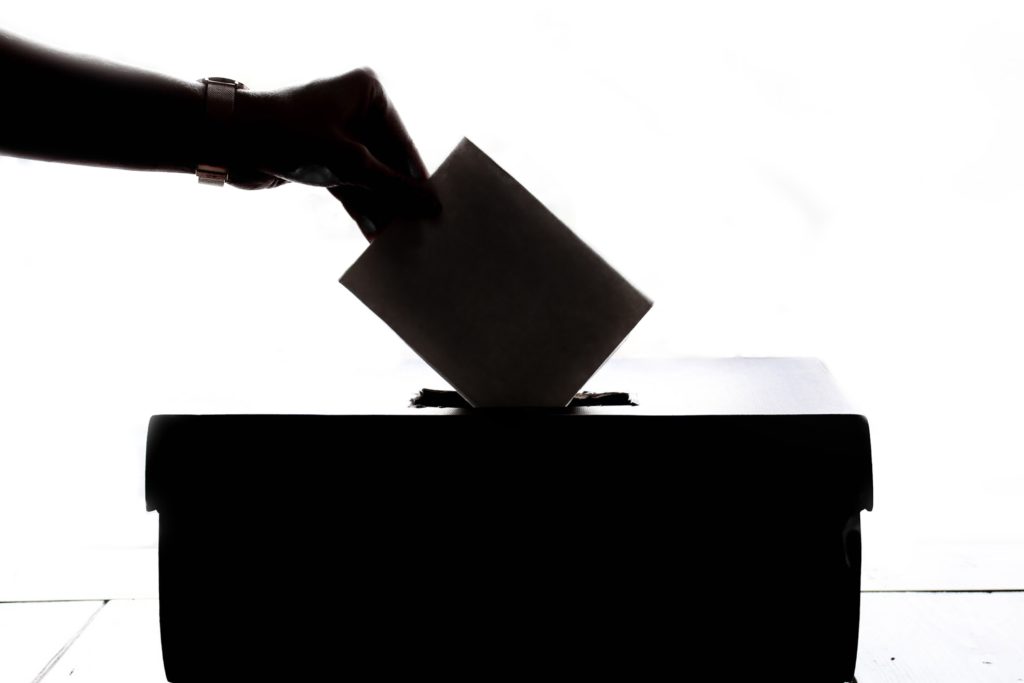
The early days of the Democratic primary campaign are highlighting the party’s diversity as it seeks a nominee who can build a coalition to take on President Donald Trump. Of the more than half dozen Democrats who have either moved toward a campaign or declared their candidacy, four are women: Sens. Kirsten Gillibrand of New York, Kamala Harris of California and Elizabeth Warren of Massachusetts and Rep. Tulsi Gabbard of Hawaii. Harris is also African-American. Former Obama Cabinet member Julian Castro, who is Latino, has also joined the race. And on Wednesday, Democrat Pete Buttigieg, the 37-year-old mayor of South Bend, Indiana, jumped into the campaign. If he wins the Democratic nomination, he would be the first openly gay presidential nominee from a major political party. He would also be the youngest person ever to become president if he wins the general election. The diversity is likely to expand in the coming weeks as other Democrats enter the race. The field that’s taking shape follows a successful midterm election in which Democrats elected a historically diverse class of politicians to Congress, a pattern they’d like to repeat on the presidential scale. Neera Tanden, president of the liberal Center for American Progress Action Fund, hailed the Democrats’ multiple trailblazing candidates for reflecting that “the central opposition to Trump is around a vision of the country that’s inclusive of all Americans.” “A lot of different people are going to see that they can be part of the Democratic Party” thanks to a field that showcases women, candidates of color, and the first potential LGBT nominee, Tanden said. The primary “hopefully will bring a lot of people into the process,” she added, recalling the high number of voters who engaged in a 2008 Democratic primary that featured a possible female nominee, Hillary Clinton, and the man who would become the first black president, Barack Obama. The array of backgrounds was on display Wednesday when Buttigieg spoke in personal terms about his marriage. “The most important thing in my life — my marriage to Chasten — is something that exists by the grace of a single vote on the U.S. Supreme Court,” Buttigieg told reporters. “So I’m somebody who understands — whether it’s through that or whether it’s through the fact that I was sent to war on the orders of the president — I understand politics not in terms of who’s up and who’s down or some of the other things that command the most attention on the news but in terms of everyday impacts on our lives.” Gillibrand has put her identity as a mother at the core of her campaign, and Harris launched her campaign on this week’s Martin Luther King holiday, a nod to her historic bid to become the first black woman elected president. A number of high-profile candidates remain on the sidelines, including two who would further bolster the diversity of the 2020 field: Sens. Cory Booker of New Jersey, who is black, and Amy Klobuchar of Minnesota. Booker, who’s widely expected to join the presidential fray in the coming days, visited the pivotal early-voting state of South Carolina this week for public events honoring King and private meetings with local activists. Klobuchar is set to speak at the University of Pennsylvania on Thursday about her work on the Senate Judiciary Committee, where Booker and Harris also are members. The affable Midwesterner recently told MSNBC that her family “is on board” if she opts to run in 2020, though she’s offered little clarity about her timetable to announce a decision. Though Klobuchar would be the fifth major female candidate in the Democratic primary, female candidates shouldn’t be shoehorned into a “narrative” dominated by their identity that excludes the policies they’re championing, said Virginia Kase, CEO of the League of Women Voters. Kase pushed back at one popular 2018 narrative in a recent interview, noting that that “every year is the year of the woman — the reality is that we’ve always been major contributors” in the electoral process. Rashad Robinson, executive director of the civil rights-focused nonprofit Color of Change, said in an interview that the diversity of the Democratic field is “a great thing and we should celebrate it,” adding that, “Our work is always about changing the rules — changing the rules of who can run and who can rule and who can lead is incredibly important.” But in addition to those “unwritten rules,” Robinson pointed to the urgency of changing the “written rules” of American life, adding that “diversity alone does not mean structures and policies and practices that have held so many back will change” overnight. Meanwhile, three white male candidates who could scramble the race — former Vice President Joe Biden, Sen. Bernie Sanders of Vermont, and former Texas Rep. Beto O’Rourke — are still weighing their own presidential plans. Biden addressed a key vulnerability in his potential candidacy this week by publicly airing regret about his support for a 1994 crime bill that’s had particularly negative effects on African-American communities, while Sanders built his own new connections to black voters during a trip to South Carolina. As Biden mulls a run for president, his allies have been sending supporters a memo that could serve as a rationale for a campaign. The memo hails Biden’s long track record in politics and argues that at a time of “unprecedented political chaos” during Trump’s administration, Biden would offer “trustworthy, compassionate leadership.” O’Rourke, for his part, continues to gauge his own future amid pundits’ criticism about blog posts he published during a recent road trip through multiple states. The 46-year-old Texan acknowledged that he’s been “in and out of a funk” following his departure from Congress after losing a high-profile Senate race in November, sparking questions about the luxury of his indecision given the family wealth and network of passionate backers he can lean on. As the Democratic field is poised to become more diverse, Republicans say Trump will run for re-election based on his
How long can Beto O’Rourke wait as 2020 pace picks up around him?
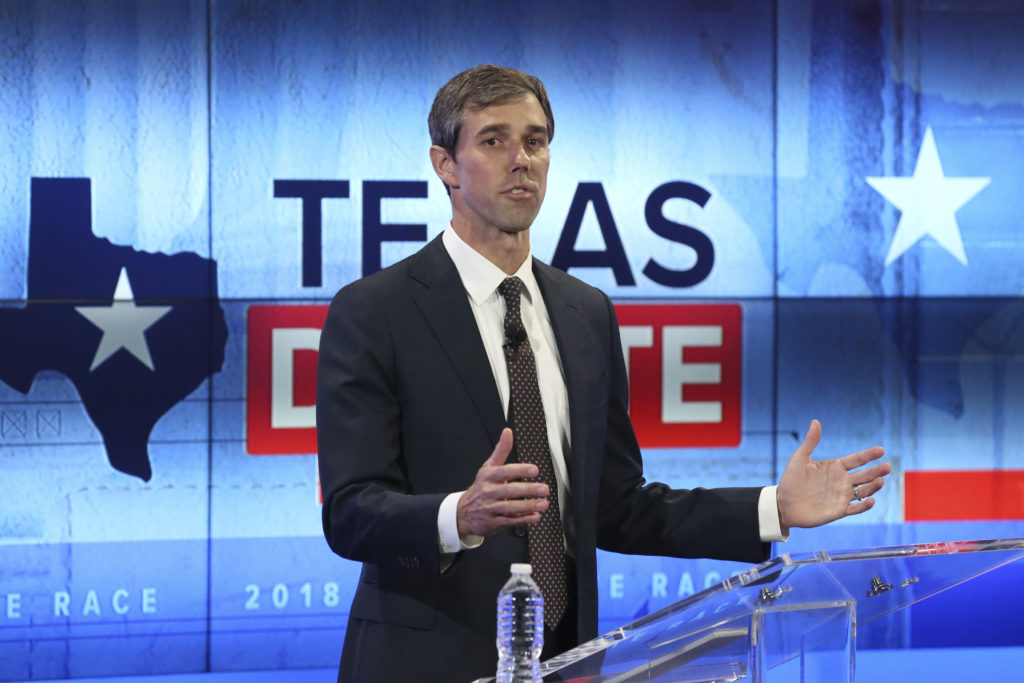
You won’t see Beto O’Rourke announce whether he’s running for president in 2020 for a while. But you may see him do almost anything else in the meantime. “So, I’m here at the dentist,” the former Democrat congressman said with a giggle during a teeth-cleaning seen live on Instagram last week, before quizzing the dental hygienist about life along the U.S.-Mexico border. Anyone grumbling about livestream overexposure can catch O’Rourke on more traditional airwaves next month in New York, when Oprah Winfrey interviews him. O’Rourke barged into last year’s Senate race almost laughably early, in March 2017, insisting he was a credible contender against the incumbent, Republican Ted Cruz, when almost no one nationally knew of O’Rourke. Now he’s doing almost anything to keep people paying attention to him without formally starting a presidential campaign for 2020. He’s not expected to decide until next month at the earliest whether he’s running. These days, that counts as playing hard to get. Influential activists in Iowa and elsewhere are clamoring for him to get in the race while some potential rivals move their timelines earlier. So far, interest in O’Rourke has held after his near upset of Cruz, but for how much longer? “They’re not going to wait forever,” Mark Jones, a political science professor at Rice University in Houston, said of Democratic campaign operatives, donors, activists and fellow politicians looking to pick sides or offer endorsements. “The more candidates who start to formally launch their candidacies, the greater the pressure will rise on Beto.” Massachusetts Elizabeth Warren announced on New Year’s Eve that she’d formed a presidential exploratory committee, hoping to get an early jump on people such as O’Rourke, former Vice President Joe Biden and Sens. Corey Booker of New Jersey, Bernie Sanders of Vermont and Kamala Harris of California. Since then, Warren has seen enthusiasm rise, especially after a successful trip to Iowa, which kicks off presidential primary voting. Julian Castro, housing chief under President Barack Obama, kicked off his campaign Saturday and could appeal to the same Hispanic community that O’Rourke may count on as a bilingual native of the borderland city of El Paso. A string of announcements from top Democrats could come this month. While still deciding, O’Rourke plans to travel the country and meet voters beyond Texas, but avoid places such as Iowa and New Hampshire, home to the nation’s first presidential primary, even though Democrats there have invited him. “My feeling is he’s lost a little momentum and that’s the downside of being a media product,” said Norman Solomon, a Sanders delegate to the 2016 Democratic National Convention from California. Solomon said questions remain about whether O’Rourke’s voting record during his three terms in Congress is too centrist to excite the Democratic base. That anyone would ask if O’Rourke is waiting too long with the election 22 months away is unusual. But anger over President Donald Trump has created an outsized Democratic appetite to go on the political attack. And because impeachment seems unlikely, fast-forwarding 2020 campaigns may become necessary. “American political campaigns have really become almost reality television programs,” said Ray Sullivan, a veteran of the 2012 Republican presidential campaign of then-Texas Gov. Rick Perry. Perry waited until August 2011 to join an already months-old Republican presidential primary field and briefly became the front-runner — something that seems impossible just two presidential campaigns later. “The attention span of activists and voters and even the media has become so short, and the attention-grabbing events so vacuous and fleeting, that the candidates would be very smart, I think, to get in early and identify and carve out their niche,” Sullivan said. For O’Rourke, a 46-year-old, ex-punk rocker, trying to project a down-to-earth image may be a major selling point to voters. But Sullivan raises this questions: “What if another candidate gets in and captures the imagination of Twitter and the activists and there may not be room for the celebrity of Beto when he’s ready?” Still, O’Rourke’s delays haven’t lessened the enthusiasm of operatives from past Democratic presidential campaigns who have formed “Draft Beto 2020” groups. “We’re building an apparatus that we can hand off to an actual campaign should he run,” said Boyd Brown, a prominent South Carolina Democrat and former member of the Democratic National Committee. He is among the leaders of the O’Rourke draft movement in the South’s first primary state. “We’re treating this like a presidential campaign until told otherwise.” Working in O’Rourke’s favor is a lack of a perceived 2020 “heir-apparent” candidate who can draw in donors and top operatives. That model may be evaporating anyway, though, because the two politicians who looked to take on that role heading into the 2016 campaign, Republican Jeb Bush and Democrat Hillary Clinton, fell short of the presidency. “Everybody who has ever thought about running for president is threatening to do it this time,” said Peter Brown, assistant director of the Quinnipiac University Poll. “The sheer size of the potential field throws out the rules of the game that have been created by years of campaigns.” Republished with permission from the Associated Press.
Midterms reveal South split along urban, rural differences
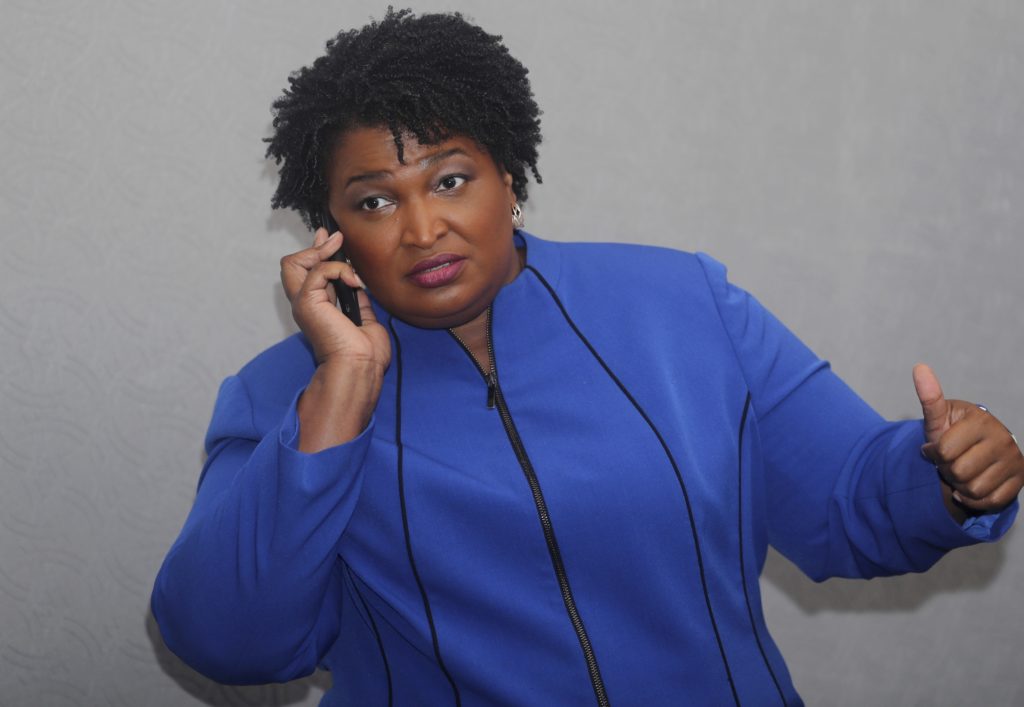
The Solid South is no more. A century of rule by “Southern Democrats” followed by a generation of Republican domination is evolving into something more complex. This month’s midterms revealed a South that is essentially splitting in two. In states like Georgia and Texas, population growth and strong minority turnout propelled liberal Democrats such as Stacey Abrams and Beto O’Rourke to come close to statewide victories once thought impossible. Yet the Old Confederacy states in between are mostly holding to form, with white majorities giving President Donald Trump high marks and conservatives a clear advantage going forward. An Associated Press analysis of election returns along with data from AP VoteCast, a national survey of more than 115,000 midterm voters, found two factors largely driving election outcomes. Competitive races required both a racially diverse electorate and Democratic success in building support from white voters in growing metro areas. One or the other wasn’t enough. For instance, Democratic hopes to make inroads in Kentucky and Tennessee failed because there weren’t enough minority voters to rely on. Meanwhile, the GOP maintained its grip on Alabama and Louisiana, states that have a significant minority population but where white voters in metro areas often voted in line with their rural counterparts. The same scenario could play out Tuesday in Mississippi’s runoff election for a Senate seat. That’s what makes Georgia and Texas stand out: The two factors were simultaneously in play to turn statewide elections competitive for the first time in a generation. That didn’t translate into victory for Abrams or O’Rourke, but the results could help Democrats navigate the upcoming debate over the type of presidential candidate to select. It could also help the party decide where to send financial and organizational resources. Trump, meanwhile, may have to pay more attention to places that have traditionally been loyal to the GOP. “The story is the rise of the Southern city centers and the surrounding areas,” said Republican pollster Brett Cowden, whose Alabama-based firm Cygnal has polled and led campaigns across the region. “People are moving there from all over, and they tend to be under 50 and college educated. Those are problem areas for Republicans.” Democrats are happy to embrace those changes, even if they’re not uniform. “What we’re talking about here is parts of the South starting to look like the rest of the battlegrounds around the country, where Democrats can stitch together a diverse coalition and win,” said Boyd Brown, a Democratic consultant and former state lawmaker from South Carolina. “But then we still have such a bad brand with small-town whites,” said Brown, who is white and comes from a rural part of the state. Virginia has already made a significant transition following decades of growth in the Washington suburbs that pushed the state from a GOP advantage to a two-party toss-up and now to the edge of becoming firmly Democratic. That trend could accelerate after Amazon picked Arlington, Virginia, as one of its new headquarters, potentially flooding the area with tens of thousands of new voters. At the other end of the spectrum is Mississippi, where the Old South’s racial politics has been on stark display ahead of the Senate runoff between Republican Cindy Hyde-Smith, who is white, and Democratic former Agriculture Secretary Mike Espy, who is black. Falling between Virginia and Mississippi is perpetual toss-up Florida; North Carolina, which has been a presidential battleground since 2008; and Georgia, which could debut as a presidential battleground in 2020 after Abrams’ got a surprising 49 percent of the vote in her bid to become America’s first black female governor. “Understand this is no longer a red state,” Abrams said in an interview, insisting the 2020 Democratic presidential nominee should “contest Georgia.” Texas is a wild card, with O’Rourke coming within 3 percentage points of Republican Sen. Ted Cruz in a state Trump won by 9 points in 2016. AP VoteCast, a nationwide survey of the American electorate conducted for The Associated Press by NORC at the University of Chicago, demonstrates the dynamic playing out across the South. Nationally, whites made up 74 percent of the electorate. Among small-town and rural whites (30 percent of the electorate), 63 percent backed a Republican House candidate, compared with 35 percent for Democrats. Suburban whites (33 percent of the electorate) split 51 percent for Republicans and 46 percent for Democrats. Urban whites (11 percent of the electorate) sided with Democrats, 57 percent to 40 percent. Whites in Virginia voted much like whites nationally, but the composition of the electorate was modestly different. Small-town and rural whites solidly supported Republicans but made up a slightly smaller share of the Virginia electorate compared with the electorate nationally. Suburban whites, meanwhile, were divided in their votes and were a slightly larger share. Georgia saw mixed results, with metro areas gaining strength, but whites in Georgia still leaning far more to Republicans than whites nationally. Abrams drew enough nonwhite voters and white liberals to the polls to outperform Hillary Clinton‘s 2016 presidential vote totals. But Abrams still fell about 55,000 votes short of Brian Kemp because of his nearly 3-to-1 advantage among whites. VoteCast showed 82 percent of small-town and rural white Georgians backed Republican House candidates. The Republican advantage was 68 percent to 30 percent among suburban whites. The margin among urban whites was narrow, 52 percent for Democrats to 46 percent for Republicans. Still, the long-term trends could be a warning sign for Republicans. Those rural whites cast 26 percent of ballots, and suburban whites cast 30 percent — both figures modestly lagging the national marks and likely to shrink as Democrats’ base in Atlanta grows. Tennessee showed Democrats’ reliance on nonwhite voters even where there is a growing metro area like Nashville. Whites in Tennessee trended slightly less Republican than in its neighbors to the south, but nonwhites made up just 17 percent of the electorate — compared with 38 percent in Georgia. The result: Democrat Phil Bredesen lost the Senate race by double digits.
Texas Congressman cites Alabama civil rights events as he defends NFL players taking a knee
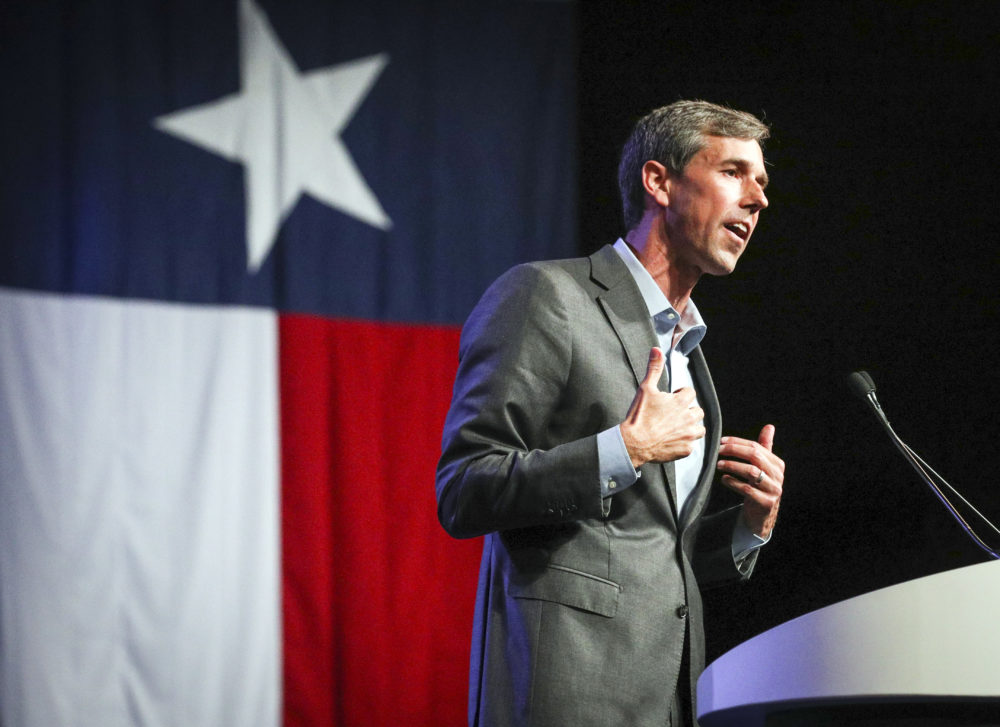
The internet is abuzz with a video of Democratic U.S. Rep. from Texas, Beto O’Rourke, who’s invoking Alabama civil rights history in his quest to unseat Republican U.S. Sen. Ted Cruz. During a town hall meeting in Houston last week, O’Rourke was asked by an attendee whether he thought NFL players who choose take a knee during the national anthem are disrespecting the U.S. military and American people. “My short answer is no, I don’t think it’s disrespectful,” O’Rourke answered. “Here is my longer answer – but I’m gonna try to make sure I get this right, because I think it’s a really important question. And reasonable people can disagree on this issue. Let’s begin there, and it makes them no less American to come down on a different conclusion on this issue. Right? You can feel as the young man does, you can feel as I do, you are every bit as American all the same.” O’Rourke went on to reference the 1963 Ku Klux Klan bombing of the 16th Street Baptist Church in Birmingham, Ala. that killed the girls. Along with the March 7, 1965 march across Edmund Pettus Bridge in Selma, Ala. When a group of roughly 525 African American protesters planned to cross the bridge on their civil rights march to Montgomery to demand the right to vote. At the bridge they where they were met by more than 50 state troopers and a few dozen men on horseback. When the demonstrators refused to turn back, they were brutally beaten, leaving at least 17 hospitalized, and 40 others injured. “Those who died in Philadelphia, Mississippi, for the crime of trying to be a man, trying to be a woman in this country, the young girls who died in the church bombing. Those who were beaten within an inch of their life crossing the Edmund Pettus Bridge in Selma, Alabama with John Lewis,” O’Rourke detailed referencing several other historical civil rights challenges Americans faced. O’Rourke went on to say he thinks NFL games are essentially a great, nonviolent platform for players to protest police brutality and injustice during the national anthem. “Non-violently, peacefully, while the eyes of this country are watching these games, they take a knee to bring our attention and focus to this problem to ensure that we fix it,” O’Rourke concluded. Read his full response below: My short answer is no, I don’t think it’s disrespectful. Here’s my longer answer, but I’m going to try to make sure I make that I get this right because I think it’s a really important question. And reasonable people can disagree on this issue, let’s begin there. And it makes them no less American to come down on a different conclusion on this issue, right? You can feel as the young man [who asked the question] does, you can feel as I do, you’re every bit as American, all the same. But I’m reminded – someone mentioned reading the Taylor Branch book … ‘Parting the Waters: [America] in the King Years’. And when you read that book and find out what Dr. King and this non-violent, peaceful movement to secure better – ’cause they didn’t get full – civil rights for their fellow Americans, the challenges that they face. Those who died in Philadelphia, Mississippi, for the crime of trying to be a man, trying to be a woman in this country, the young girls who died in the church bombing. Those who were beaten within an inch of their life crossing the Edmund Pettus Bridge in Selma, Alabama with John Lewis, those were punched in the face, spat on, dragged out by their collar at the Woolworth lunch counter for sitting with white people at that same lunch counter in the same country where their fathers may have bled the same blood on the battlefields of Omaha Beach or Okinawa or anywhere that anyone ever served this country. The freedoms we have were purchased not just by those in uniform, and they definitely were. But also by those who took their lives into their hands riding those Greyhound buses, the Freedom Riders in the Deep South in the 1960s who knew full well that they would be arrested, and they were, serving time in the Mississippi State Penitentiary. Rosa Parks, getting from the back of the bus to the front of the bus. Peaceful non-violent protests including taking a knee at a football game to point out that black men, unarmed, black teenagers, unarmed and black children, unarmed, are being killed at a frightening level right now including by members of law enforcement without accountability and without justice. And this problem – as grave as it is – is not going to fix itself. And they’re frustrated, frankly, with people like me and those in positions of public trust and power, who have been unable to resolve this or bring justice for what has been done and to stop it from continuing to happen in this country. So non-violent, peacefully, while the eyes of this country are watching these games, they take a knee to bring our attention and our focus to this problem to ensure that we fix it.

